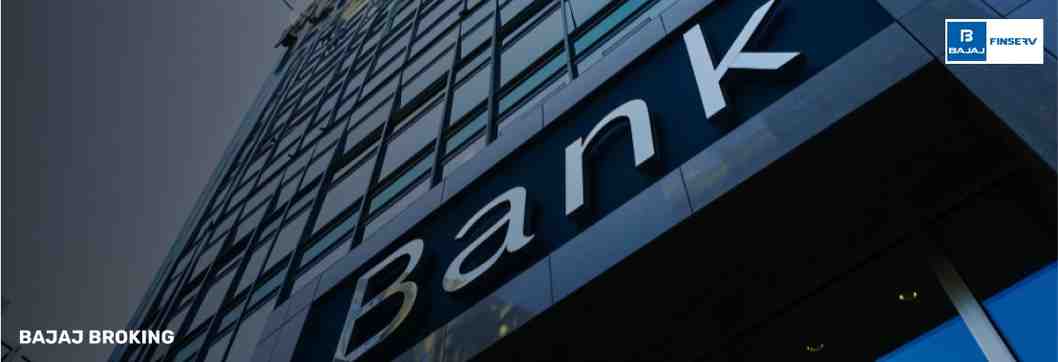Banks are the backbone of any economy, but what happens when they start showing signs of financial stress? To ensure early intervention and avoid a full-blown crisis, the Reserve Bank of India (RBI) introduced the Prompt Corrective Action (PCA) Framework. Think of it as a financial health check-up system if a bank's performance goes below certain thresholds, the RBI steps in with corrective measures. The idea is simple: identify problems early, act quickly, and restore stability without disrupting the system. Read on as we discuss more about PCA by RBI.
What is Prompt Corrective Action?
Prompt Corrective Action (PCA) is a mechanism announced by the Reserve Bank of India (RBI) in December 2002 and updated in April 2017. It is an early-intervention tool against banks that transgress certain prudential parameters of their financial institutions' capital positions, asset quality, leverage, and profits. The objective is to have the ability to take corrective action to improve financial health, protect the interests of depositors, and ensure systemic stability through intervention.
Source: Livemint
Objectives of the PCA Framework
Threshold monitoring enables early detection of financial deterioration
Mitigation of increasing losses by compulsory/voluntary actions
Maintenance of the solvency of the banks and maintaining the trust of the depositors
Market credibility development and financial discipline promotion
When Does the RBI Trigger Prompt Corrective Action?
1. Capital Adequacy Ratio (CRAR) / CET‑1
2. Asset Quality (Net Non‑Performing Advances – NNPA)
3. Profitability (Return on Assets – ROA)
Negative ROA for 2 consecutive years → Grade 1
Negative ROA for 3 consecutive years → Grade 2
Negative ROA for 4 consecutive years → Grade 3
4. Leverage (Tier 1 Leverage Ratio)
Tier 1 leverage 3.5–4% (i.e., leverage > 25× CET-1) → Grade 1
Tier 1 leverage < 3.5% (leverage > 28.6× CET-1) → Grade 2/3
Source: RBI
What are the Implications of a Bank Being Placed Under PCA?
Mandatory measures:
Discretionary actions
Growth in lending, particularly to corporates, was restricted
Suspension or relaxation of deposit-raising operations
Forced special audits and recovery strategies
Stringent oversight
RBI strictly supervises remediation through the Board for Financial Supervision
Reputational effect:
Poor market perception and potential decline in credit growth
Source: Livemint
How do Banks Benefit from PCA?
Early treatment provides for speedier recovery and avoids greater loss
Formal supervision provides clearer remedial channels for capital and asset quality
Greater discipline instils risk-conscious behaviour in bank management
Depositor protection assists in maintaining financial stability and confidence
Is It a Cause for Concern for Depositors If Their Bank Falls Under PCA?
Not necessarily. PCA is concerned with solvency and risk control. The routine activities in Banking, such as deposits and withdrawals, are maintained, but lending might be reduced. Regulatory actions being undertaken by the RBI do not have the objective of jeopardising depositor interests, but rather of safeguarding them.
What Measures Help Banks Exit the RBI’s PCA List?
To exit the PCA regime of the RBI, banks are required to meet certain financial criteria, including capital adequacy, asset quality, profitability, and leverage. Some major remediation procedures are:
Recapitalisation: Add new equity or cut back on debt in order to replenish the Capital to Risk Ratio. Recapitalisation produces stability in capital structure by changing the debt-to-equity ratio.
Asset quality: Bring down net non-performing assets by recovering and better provisioning.
Recovery of profitability: Return on Assets is positive consistently.
Leverage: Reduce leveraging positions, restructure liabilities, and enhance capital to reduce the level of debt-to-equity ratio and Tier 1 leverage.
After sustaining such metrics to be more than the PCA thresholds of RBI over a period, restrictions are removed, and the regulatory status is considered.
Source: Investopedia
What is the Purpose Behind Implementing PCA?
The Reserve Bank of India (RBI) issued the Prompt Corrective Action (PCA) framework in December 2002, and reviewed it in 2017 as a pre-emptive supervisory framework aimed at halting new weaknesses among banks before they enter into full distress. Its ultimate goal is to safeguard the depositors, as well as to maintain a general financial stability, by allowing the regulator to intervene at the right time and to require focused management of the institutions.
This framework encourages the RBI to interact intensively with the board of a bank, limit risk-taking by a bank, and demand that it implement capital conservation and provisioning initiatives. Through its enhancement of the discipline of regulation, PCA facilitates prompt resolution and therefore prevents banking crises, which reinforces the resilience of the systemic level.
Source: RBI
Conclusion
Prompt Corrective Action (PCA) is an organised regulatory provision set in force by the Reserve Bank of India to cure the initial symptoms of financial distress in banks. It works on observing certain important measures that include capital adequacy, asset quality, profitability, and leverage. In the case of exceeding thresholds, PCA initiates an array of corrective actions in proportion to the level of threat in an attempt to stabilise the operations of the bank.
This structure serves to safeguard the confidence of depositors, establishes an instant intervention and imposes financial discipline on the institutions. Through enhancing accountability and resilience, PCA is instrumental in maintaining the financial soundness and integrity of the Indian banking system.




